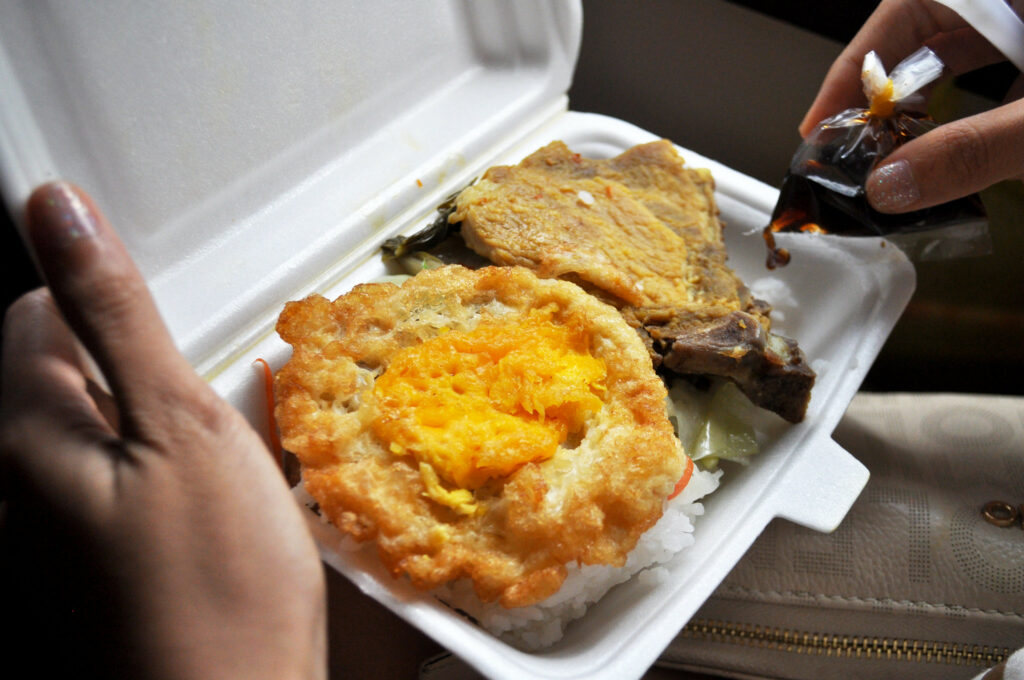A polluted air outside makes office workers more likely to order food delivery instead of going out for lunch, which increasing plastic waste from food packaging, a new study showed.
Since this issue is unlikely to be solved anytime soon, the researchers call for more environmentally friendly packaging and improved waste management to tackle this growing issue.

The pandemic has shifted much of our restaurant eating to food takeaway and delivery. But even before the pandemic, a growing number of people were using these services.
Professor Alberto Salvo and his team focused their study on China, which is one of the world’s largest users of online food delivery platforms, with 350 million registered users. An estimated 65 million meal containers are discarded each day across China, with office workers contributing over one-half of demand.
“Plastic waste is a growing global environmental concern. While we see more research on the impact plastic pollution is having on the natural environment, there has been less work trying to understand the human behavior that drives plastic pollution. This is where our study seeks to contribute,” said Salvo.
The researchers surveyed the lunch choices of 251 office workers in three often smog-filled Chinese cities, Beijing, Shenyang, and Shijiazhuang, between January and June 2018. They also accessed the 2016 Beijing order book of an online food delivery platform to complement the survey.
Data from both sources were then compared with PM2.5 measurements (fine particles less than 2.5 micrometers in diameter) during lunchtime periods. The team found that PM2.5 levels during these periods were often well above the acceptable standard for the US, estimated at 35 μg/m³.
Correcting for weather and seasonal influences, the researchers found that a 100 μg/m³ increase in PM2.5 raised food delivery consumption by 7.2%. Such a shift increased office workers’ propensity to order delivery by a factor of six to 43%, according to the study’s findings. .
Co-author Prof Chu said: “Faced with smog or haze outside, a typical office worker at lunchtime can avoid exposure only by ordering food to be delivered to his or her doorstep. A broader base of consumers has more alternatives to avoiding the outdoor environment on a polluted day, for example, by using a home kitchen when at home.”
The researchers received over 3,000 photos of meals from office workers. This helped to quantify how much disposable plastic varies across different lunch choices, specifically meals eaten at the restaurant versus those delivered to the office. A 100 μg/m³ PM2.5 increase raised a meal’s disposable plastic use by 10 grams on average, they found.
The photographs published as part of the study showed that the average delivered meal used 2.8 single-use plastic items and an estimated 54 grams of plastic. Meanwhile, the average dine-in meal used an estimated 6.6 grams of plastic, such as in chopstick sleeves or bottles.
Based on the delivery app, the researchers estimated that on a given day, if all of China were exposed to a 100 μg/m³ PM2.5 increase in dose as is routinely observed in Beijing, 2.5 million more meals would be delivered, requiring an additional 2.5 million plastic bags and 2.5 million plastic containers.
Co-author Prof Liu said: “Our findings probably apply to other typically polluted developing-nation cities, such as in Bangladesh, India, Indonesia and Vietnam. Waste management practices vary widely, with the wind blowing plastic debris away from uncovered landfills or plastic being discarded into rivers and from there into the ocean.”
The study was published in the journal Nature Human Behaviour.


